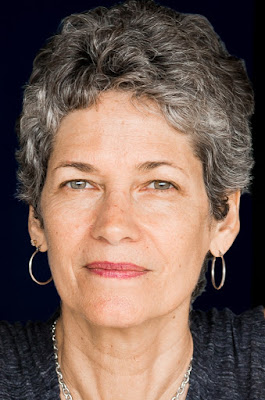What prompted you to write Gone to Drift?
Gone to Drift arose from a commissioned short story originally called The Dolphin Catchers. I had this picture in my mind of a boy sitting on a crumbling wall staring out to sea in the rain. And I started to think about this boy – why was he waiting? Who was he waiting for? I grew up going to sea with my parents and my environmental work often has a marine component, so I also wanted to write about the Caribbean Sea.
You describe the loss of traditional livelihoods and the consequences. Could you expand on this?
Yes, in my lifetime I have seen the significant reduction of fish catches and the affect it has had on fishing, both as a livelihood and as a culture. I wanted to look at the difference in how an “old-time” fisher might regard the sea, compared to a young fisher. I have also been struck by the independence and skill of fishers – the sea is their boss, but the sea could kill them too. Of course, fishing as a livelihood and as a culture has done much damage – so I wanted to explore these contradictions.
There are two voices in the book: Lloyd and his grandfather. What are you trying to do here?
I want to draw comparisons between the grandfather’s fishing world when he was a child in a rural fishing village in Treasure Beach roughly fifty years ago, compared to his grandson’s fishing life in Kingston in the present day. I also wanted to explore cross-generational relationships and how ethics and attitudes might be transmitted. I wanted to write about how good people could be driven to acts of desperation by economic circumstances.
There's a lot of detailed documentation about marine life, the culture of fishing communities etc. How did you research this? Or was it already familiar to you?
I knew some. My childhood and young adulthood on the sea helped, as well as my environmental work. The research I did was more about how fishers lived 40-50 years ago, what their catches were like, how they regarded the sea and how they related to it. I am very grateful to many people who generously shared their recollections and stories with me.
How can we engage young people in caring about the environment? Is literature a useful tool?
Only if young people are readers! Reading was such a sanctuary when I was a teenager, I wanted to see if I could tell a Jamaican story, a Caribbean story that would interest even an urban teenager.
What message would you have for Jamaican teenagers about the environment?
That this is THE issue of your generation. This is about the world you will inherit. That the environment is not a trivial matter – every human being on earth is dependent on it for water, food, shelter – for life itself. That we can’t say we love Jamaica if we don’t include the land and the sea.
How do you see Lloyd? Is he a "typical" Jamaican boy? How would Jamaican teenagers identify with him?
He is a typical Jamaican boy of a certain socio-economic class. I am wary of calling anyone “typical” – if Jamaica is one thing, that thing is diverse. I think many Jamaican teenagers have the experience of helping their parent or guardian in a small business and having a loving relationship with a grandparent. I hope young readers identify with Lloyd’s search for his grandfather, and for those with no experience of the sea or fishing, I hope the book opens a world for them.
Do some of the events in the book have an echo in your childhood experiences?
Yes – some of the places described, but my no means all, were childhood places. But I never had to wrest a living from the sea – the people in Gone to Drift come from a very different place.
Pedro Cays sound fascinating. Can you explain more about them and their importance?
The Pedro Cays are three small islands that rise from a submarine bank in the Caribbean Sea, south-west of Jamaica. The Pedro Bank is large – nearly three-quarters of Jamaica’s size. It’s our best remaining fishing ground, and it’s important for sea birds and other migrating animals like sea turtles, but it is very poorly managed. People live on two of the cays year round so Jamaica can claim it as an archipelagic state; so the Pedro Cays have political importance as well.
Are dolphins under threat in Jamaica and the Caribbean?
There are different species of dolphins in the Caribbean, so it is hard to make a blanket statement about that. I do think we are removing wild dolphins from populations for the captive industry without adequate study, and, personally, I don’t think we can provide what dolphins need as a species in captivity. I will say that all species of dolphins are protected under international trade laws and in our local laws as well because it has been recognised that they are in need of protection.
About Diana McCaulay
A lifelong resident of Kingston, Diana McCaulay founded the Jamaica Environment Trust in 1991 and still serves as its CEO and guiding force. She is also a former Gleaner columnist. She says:“As reading meant so much to me as a teenager, I’m hoping Gone to Drift will be read and enjoyed by many Caribbean young people. I wanted to pay tribute to our long tradition of fishermen, and to look at what the loss of traditional livelihoods and the depletion of fisheries in the Caribbean means to us.”

Gone to Drift @ Amazon
For further information, please contact info@papillotepress.co.uk

No comments:
Post a Comment